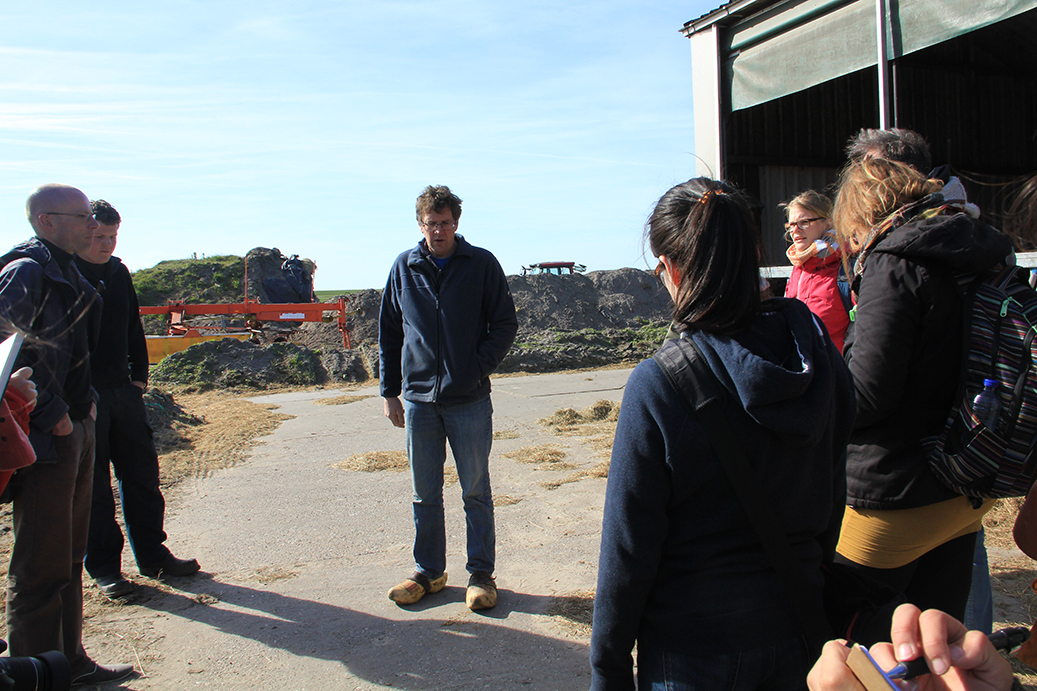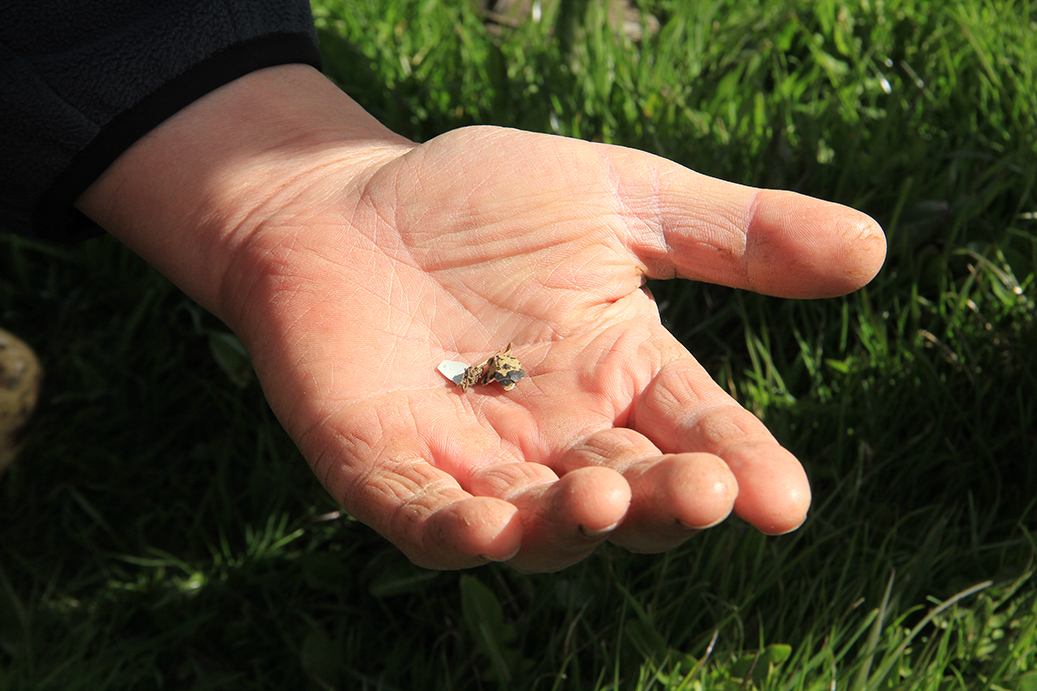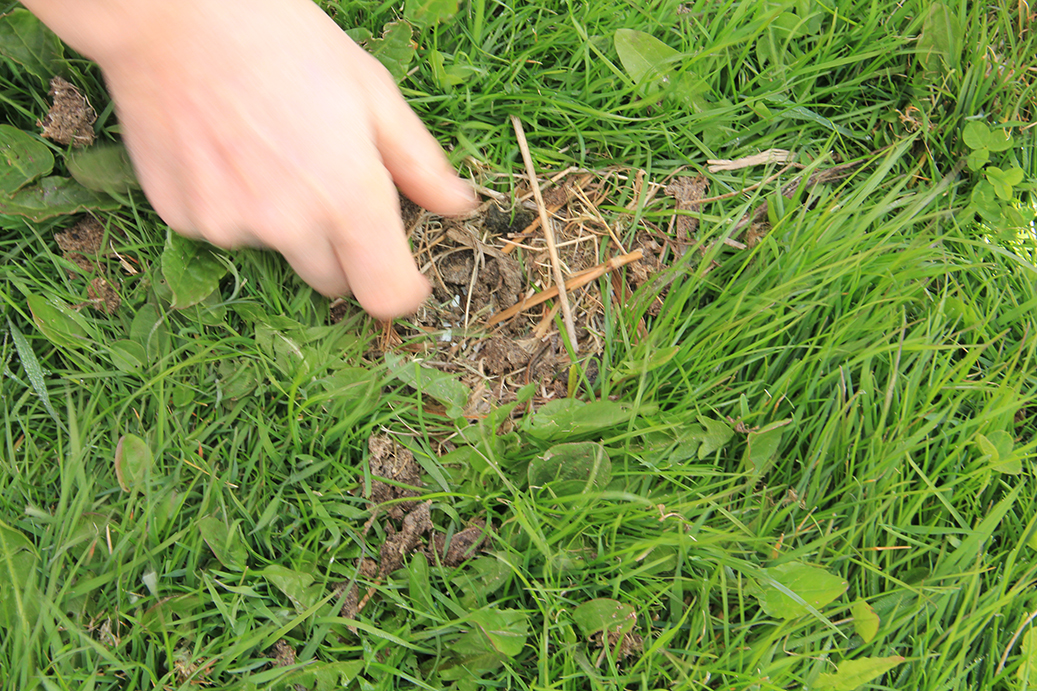A farmer and his bird
Meadow birds have had a special relation with farmers, probably since agriculture started thousands of years ago. Migratory birds are attracted to the same river deltas, shorelines and irrigated fields as humans. On the island of Terschelling they assemble in large flocks in the polder, near the sea dike. The atractiveness of these meadows for the birds stems from human intervention, as it was the construction of the dikes that allowed them to breed and forage there in large numbers in the first place. The connection however, goes much further.
Different migratory birds come to the island during different seasons of the year. In general they share the same areas, mostly in the south of the polder, but some are more concentrated and will fight other species for the best breeding territory. The most prominent meadow birds on the island are the Eurasian Oystercatcher, Black-tailed godwit (Grutto), Common Redshank (Tureluur) and Northern lapwing (Kievit).
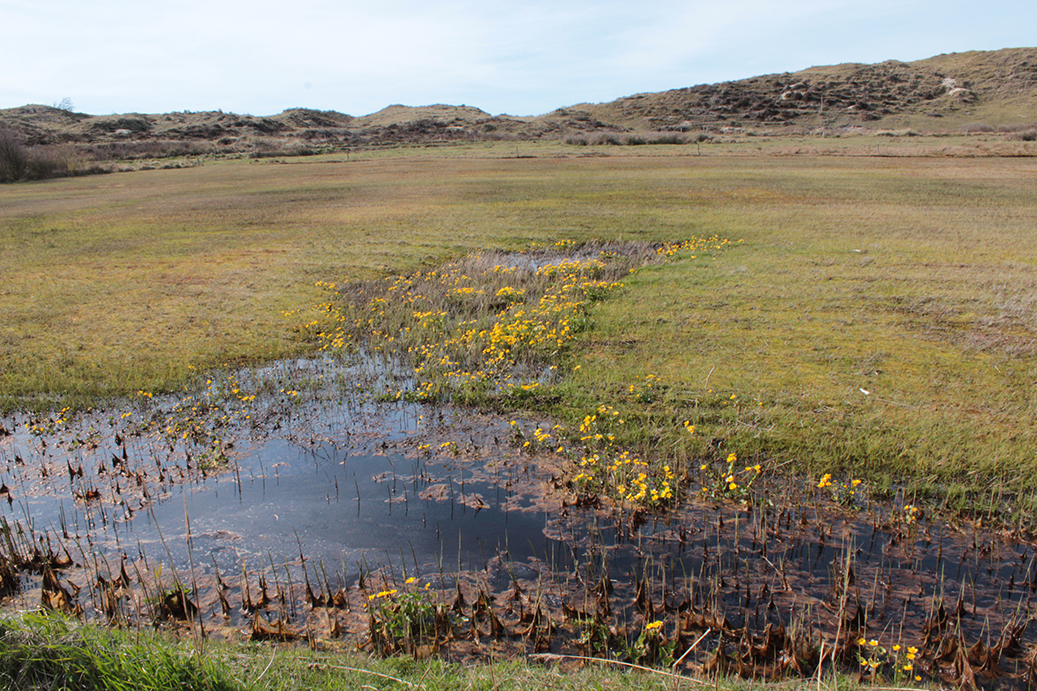
Nowadays, when certain species arrive, farmers offer a suitable living environment to the birds by raising the water levels in some polders. The higher water level forces insects and worms closer to the surface, making it possible for long-beaked birds to forage.The high water level is recognizable to the birds by the large amount of flowers in the fields. To them, the grass looks rather dull, but flowers, berries and insects shine more brightly. Under bright daylight ultraviolet light reflects off of them. Many meadow birds can perceive UV light in addition to the spectrum visible to humans.
Around the same period, from March till July, the farmers stop mowing their grass. The taller grass offers protection for the nests of the meadow birds from birds of prey. Chicks also use the tall grass of the meadow as protection, and the flowers to catch insects. The decision to stop mowing the southernmost polders during spring has decreased the amount of suitable grass produced to feed the dairy cows on the island. Also the choice of some farmers not to weed, and to use local grass varieties, has led to an increased demand for English ryegrass imports from the Dutch mainland. Without some financial assistance from the government and bird protection agencies, many farmers would not be able to offer meadow birds protection on their land. The ones that do, however, are proud of their contribution.
When farmers spot bird nests in their meadows they place wooden sticks near or over it. In this way they make sure that they do not crush them by foot or farm equipment. Thus it remains possible to spread manure on fields that are already partly occupied by birds. A tradition that only stopped in 2014 was the collecting of the eggs of the Northern lapwing (Kieviet). Realisation has come that the Northern lapwing needs similar protection to the other meadow birds.
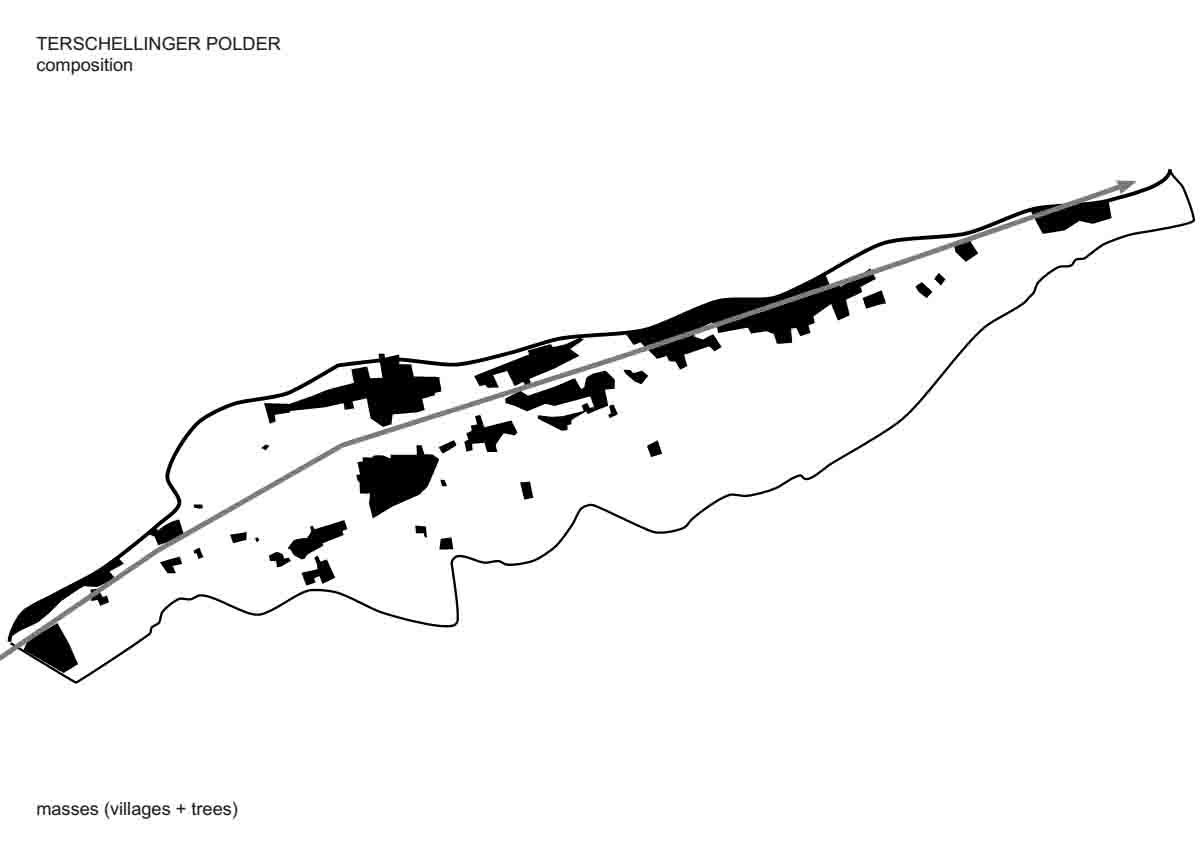
2014 was a bad year for the Grutto and other meadow birds in the Netherlands. According to bird counts, the number of breeding pairs has decreased significantly over the years. Climate change and intensive agricultural practices have impact on the routes birds take, or if they choose to leave during winter at all. If migratory birds settle in northern Europe their numbers could decrease sharply during a single cold winter. For the moment, most meadow birds are still tempted by the warm fertile lands of West-Africa and the Mediterranean coast. Traditional agricultural techniques are however also rapidly being replaced with intensive farming at this end of the route. The migrations can only continue if the birds are taken into account across the continents.
On the island there are a number of duck decoys used to attract birds like ducks and geese. Unlike the duck decoys on the Dutch mainland, dogs were not used to catch the birds on Terschelling. Instead a funnel-structure and tame ducks were used to lure birds into captivity.
